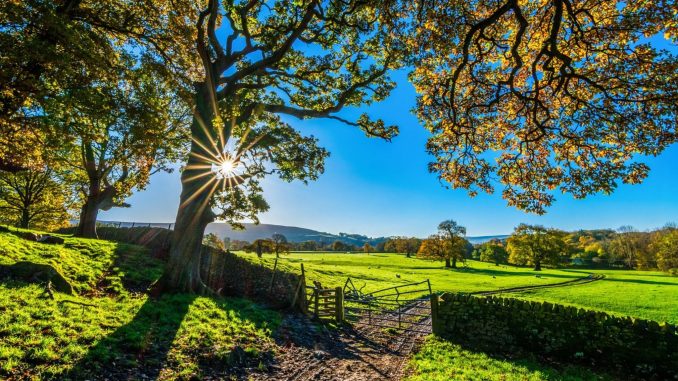
Power, People, and the Price of Extraction
Why it matters:
For centuries, extractive energy systems (coal, oil, gas) fueled empires—driving colonization, enslavement, land theft, and resource wars. The logic was simple: control energy → control people → control territory.
The opportunity:
Community-owned, regenerative energy flips the script—putting power (literally) back in the hands of the people and aligning prosperity with planetary health.
The Big Picture
- Energy = empire: Fossil economies required conquest, coerced labor, and compliant states to secure fuel and routes.
- Extraction economics: Profits privatized; pollution, poverty, and political instability socialized.
- Control loops: Whoever owns generation + grids shapes prices, policies, and public possibilities.
Bottom line: The crisis isn’t only carbon—it’s concentrated power.
How We Got Here (fast history)
- Colonial fuel cycles: Plantations, mines, and ports were built to move energy and goods outward—wealth flowed up; harms stayed local.
- Infrastructure as domination: Pipelines, rail, and shipping corridors doubled as tools of territorial control.
- Petro-politics: Resource dependency locked nations into coups, debt, and wars—from oil fields to shipping straits.
- Communities extracted twice: First their labor/land, then their future via pollution and underinvestment.
The Damage (we live it daily)
- People: Displacement, exploitation, redlined neighborhoods, toxic exposure.
- Planet: Warming, water stress, degraded soils, biodiversity loss.
- Politics: Corruption, captured regulators, violence around “strategic” zones.
- Possibility: Local ingenuity smothered by monopoly utilities and distant investors.
The Shift: Regenerative, Community-Owned Energy
Core idea: Move from centralized, extractive systems to distributed, democratic ones—renewables owned and governed by the communities they power.
What it looks like
- Energy co-ops & public power: Residents own generation; revenues stay local.
- Microgrids + storage: Solar, wind, batteries keep hospitals, schools, and homes running—grid or no grid.
- Agro-voltaics & rooftops: Food + energy on the same land; rooftops become cash-flowing assets.
- Transparent pricing: Cost-reflective rates; profits reinvested in resilience, not dividends.
Why it works
- Physics: Sun + wind are everywhere; electrons don’t need empires.
- Risk: Local ownership reduces geopolitical shocks and price spikes.
- Justice: Benefits flow to frontline communities first, not last.
What Changes When Communities Own Power
- Bills → dividends: Families become stakeholders, not just ratepayers.
- Jobs here, not there: Installation, maintenance, retrofits, and energy services are local work.
- Health gains: Less soot, fewer asthma attacks, safer streets (LED + mobility).
- Civic muscle: Co-ops teach governance, transparency, and shared decision-making.
The Playbook (do this next)
- Map demand + roofs + land: Identify schools, clinics, and co-op housing as anchor loads.
- Form an energy co-op: One member = one vote; publish bylaws and conflict rules.
- Lock fair finance: Public banks, green bonds, CDFIs; cap returns, prioritize affordability.
- Build microgrids: Solar + storage first; add wind, geothermal, demand response as you scale.
- Secure interconnection: Negotiate tariffs; push for right-to-connect and community net metering.
- Share the surplus: Reinvest in weatherization, heat pumps, EV carpools, and resilience hubs.
- Measure what matters: Energy burden down, outages down, local jobs up, emissions down.
Yes, but…
- “Isn’t it expensive?” Up-front, yes. Over life-cycle, cheaper and safer than fossil volatility.
- “What about reliability?” Microgrids + storage outperform during storms and wildfires.
- “Will it scale?” It already does—distributed systems scale by replication, not just size.
Signals to Watch
- Cities adopting community choice energy and public power.
- Co-ops publishing dividends + outage data.
- Schools + clinics running on solar + batteries as resilience anchors.
- Utility rules changing to permit microgrids, peer-to-peer trade, and fair interconnection.
The Bottom Line
Destructive energy systems were never just about fuel—they were about dominion.
Community-owned regenerative energy is how we decolonize power, stabilize the climate, and unlock human potential.
Power with people → Power for people → Power by people.
That’s the future worth building.
Call to Action
- Communities: Form an energy co-op; start with your school, clinic, or housing complex.
- Mayors + councils: Adopt community choice, microgrid ordinances, and right-to-connect.
- Funders: Back ownership, not just megawatts—finance dividends for households.
- Media (us): Track the wins, publish the playbooks, amplify the replicable models.